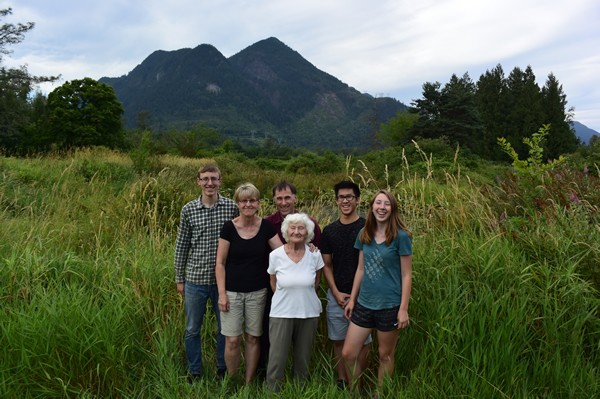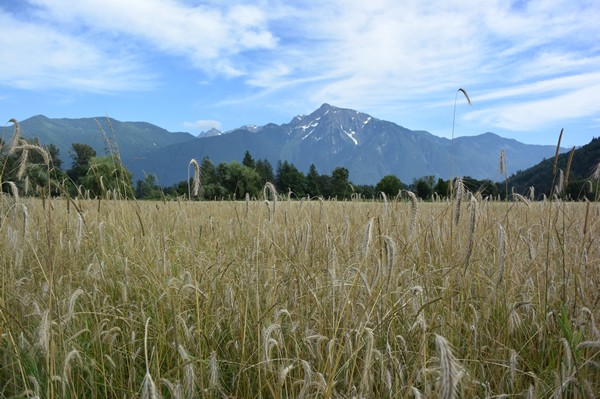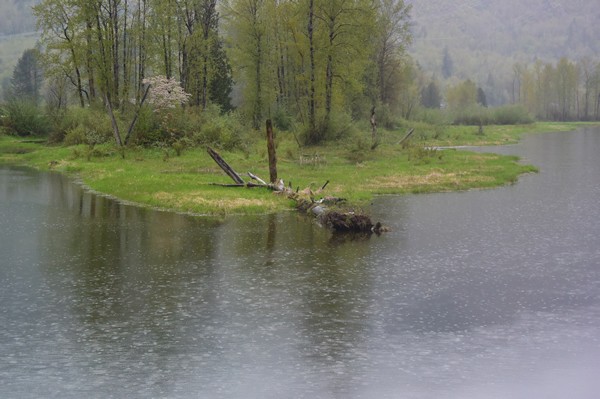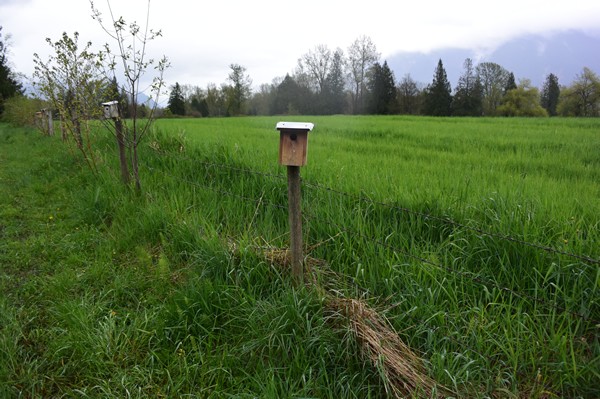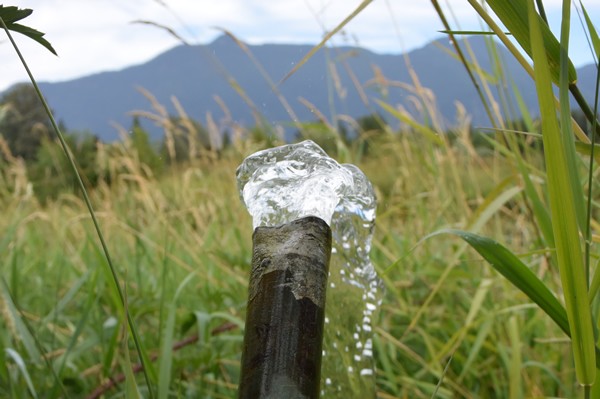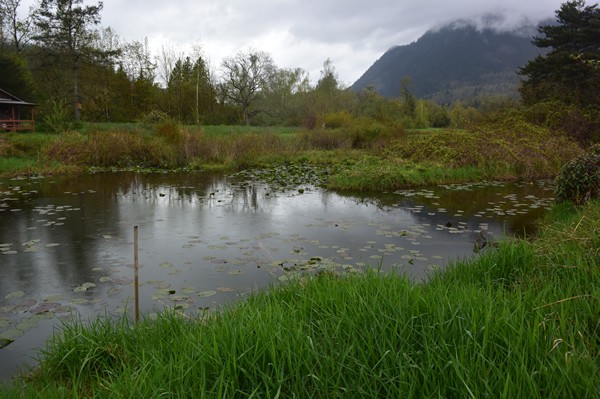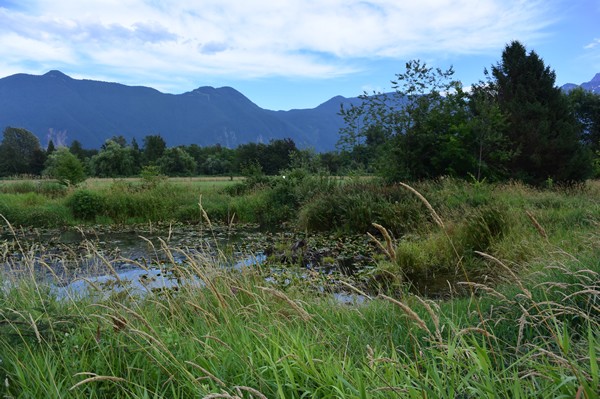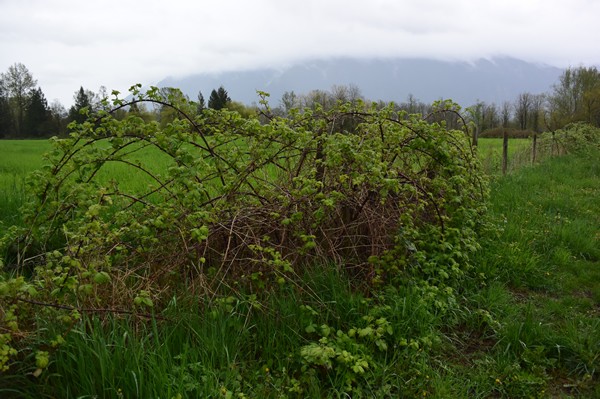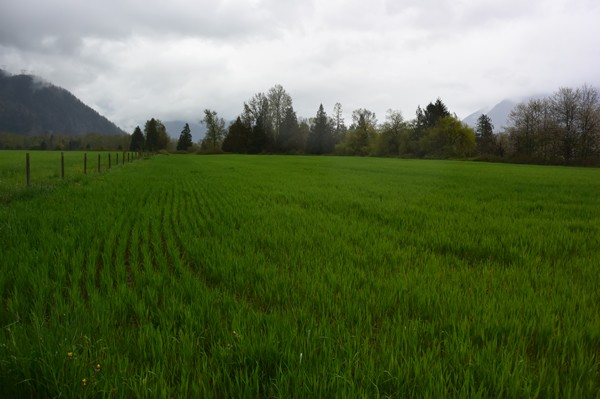Site Description
Name of the site: Cedar Isle Farm
Address: Fraser Valley | District of Kent, Agassiz
Size: 94 acres
Type of crops: Organic forage and grains
Managed property: 20 years
Website address: http://www.cedarislefarm.ca/
We see the land as habitat and that’s how we farm it.
Stewardship Practices Guides
The following guides are relevant to this project site
- Riparian Areas in Settled Landscapes
- Guidance for Restoration Activities in Riparian Areas
- Drainage Maintenance in Agricultural Waterways
Click to download table for stewardship practices on the Cedar Isle Farm site.
Stewardship project partners:
Fraser Valley Conservancy
Fraser Valley Watershed Coalition
Project Overview:
Jim and his family operate Cedar Isle Farm where, along with producing 26 acres of organic grain, they have sought to enhance the rich wildlife habitat on their land. This enhanced habitat includes bird boxes for wood ducks, tree swallows, bats and barn owls. They also maintain wildlife corridors through their fields and have extensive wooded areas on the property. Another defining feature of their farm are the two wetland ponds that the family maintains year-round by piping water down from the hillside. This involves an annual canoe trip up the nearby hillside to clean out the intake pipe so that water can flow down to their ponds.
We have a small pond right behind the barn that we feed with the water from the hillside.
To increase the species diversity in this aquatic habitat, they worked with Monica Pearson and the Fraser Valley Conservancy (FVC) to restore some wetland. Monica and her team brought in an excavator and trucks filled with large woody debris. The excavator was used to deepen the pond, increasing the available aquatic habitat. The woody debris was added to the ponds to increase habitat complexity. They also created a natural filtration system by creating a series of channels for the water to flow through. Finally, the excavator also helped remove invasive water lilies from one of the ponds.
They dug out some of the grass, added some stumps and wood residuals to diversify the habitat, and [constructed a natural filtration system to remove] any excess nutrients. Another [pond] had become infested with water lily over the years. We used the long reach excavator to remove some of [the water lilies].
Jim spends a great deal of time in his fields, so if you are interested in visiting Cedar Isle Farm you may be missed. However, if you are interested in learning more about their operation they do hold an annual field day each year for their community supported agriculture (CSA) group members. See their website for more details about the Cedar Isle Farm CSA (http://www.cedarislefarm.ca/).
Key stewardship actions:
- Maintain and restore riparian wetlands
- Install large woody debris and habitat complexing
- Control invasive species
Champions
Grieshaber-Otto and Exley family
Motivation
A core motivation for Jim and his family in running Cedar Isle Farm is producing food for their local community. Much of their organic grain is produced for their community supported agriculture (CSA) group demonstrating their commitment to producing food for their community.
We’re trying to have a little oasis here of community focused farming.
This focus on community is connected to their desire to farm in a way that it beneficial to wildlife. Each year, they hold field days for their CSA members who can come and see how their grain is grown. These field days usually involve a talk or activity related to the environment. In the past, this has included a wildlife scat identification walk (led by Diane) and a talk by Monica Pearson on the Oregon Spotted Frog.
We have a farm visit as part of our community supported agriculture group and every year we have a gathering of people who want to come visit see their grain growing and see how we harvest and process it here on the farm. One year [Monica] gave a presentation on the Oregon Spotted Frog to our CSA. It’s a way of spreading the word of her good work to an appreciative audience in the agricultural or the food community.
However, their commitment to providing wildlife habitat and stewardship is perhaps best encapsulated by Jim:
We see the land as habitat and that’s how we farm it.… I feel privileged being able to spend time in habitat that is so rich.
Challenges
Jim identified two major challenges relating two stewardship practices on their farm. The first is a familiar problem for many producers: invasive species control. In one case, they created a windbreak that acts as wildlife corridor across one of their fields. Blackberries invaded the disturbed ground surrounding the windbreak and now Jim is losing productive land to blackberries.
We planted a windbreak…. in the midst of a big field, deliberately for habitat. It started out a little dinky narrow band of trees and now it’s probably an acre and a half. It’s just expanded. The bears love it. And then the blackberries come … then you come by with a mower and you mow as far as you can.
Controlling invasive plants is particularly difficult for organic growers. Although Jim thinks that this work would be significantly reduced if he could access a side mounted flail mower.
We have maintained fence line hedgerows for years, but with the new absence of cattle, it is increasingly difficult to keep the blackberries etc. in check organically. Yearly use of side mounted flail mower would make this onerous task more manageable.
The other major challenge facing Jim is a lack of time, although he makes it clear that he really enjoys doing stewardship work.
I certainly don’t begrudge the time and I think it’s time very well spent.
However, Jim does acknowledge that, as his time is limited, community assistance can be very beneficial.
We have had community assistance in building and placing wood duck and swallow nest boxes, for which we were very grateful. However, what would be hugely appreciated is a small team of folk to clean out and maintain the boxes (and replace as required). Otherwise, the job inevitably is added to the long list of my farm duties, and it tends to drop off the bottom, which is both unproductive and unsatisfying. Ah, for a dependable, competent, and knowledgeable team of bat roost and bird house angels!
Outcomes
Cedar Isle Farm provides habitat for red-legged frogs, beavers, otters, wood ducks, barn owls, and many other species. With the help of conservation groups, such as the Fraser Valley Conservancy (FVC), the Grieshaber-Otto and Exley family has further enhanced the rich habitat on their farm.
It’s been quite a boost to the center of the farm and that brings the aquatic habitat from the slough, which surrounds the farm. It brings it to the center of the island which is nice and it’s a whole different habitat too because it is not connected to the slough. It’s been great for the frog population. We have red-legged and [other types] of frogs. We get quite a visitation of a wide variety of species in [the pond]. Both before and since [the restoration project]. I just saw the otters go in there. Wood ducks are quite common, and [we see] the occasional teal and we get some Virginia rails and [tons of] red wing blackbirds.
The maintenance of this aquatic habitat is crucial to the frog populations, including the red-legged frogs, in their ponds. As Diane explains, when Jim and Hannah got the water flowing down from the hillside the impact on the frog population in the ponds behind the barn was immediate.
It was quite quiet behind the barn. We went up and got the water running again and within a day we could hear the [frogs] behind the barn.
Another unexpected benefit of completing the riparian restoration project with Monica was an educational opportunity for Jim’s son. His son was able to complete a science project with the help of Monica, which included a salamander egg count.
Our son and a couple of his friends did a little project for Monica to survey the salamander eggs in the pond. They did it as part of a school project which was neat. She lent them the boats and the glasses that are polarized, so you can see through the water better, and she gave them the sheets in which they could record it all. They felt like little scientists. It was amazing. It was a big part of their science experience.
Completing these stewardship practices and working with people like Monica Pearson has helped connect Jim with other organizations in some surprising ways. The FVC also monitors their pond each year. One year, someone from the FVC noticed invasive Japanese knotweed on their farm and connected them with the Invasive Species Council who came and took care of it.
They noticed that the Japanese knotweed in the area just one small patch right smack in the middle of our farm. [And they connected us with] somebody from the Invasive Species Council.
Jim was also connected to a Barn Owl expert through Monica Pearson. The expert helped take care of a sick owl one year and now monitors their barn owl houses.
There’s a wonderful gentleman — Dick Clegg — who comes by and puts up barn owl houses and that’s another connection made through her. And again he comes by and sets up houses but also monitors them over time.
Stewardship Practices Menu
Learn more about Species at Risk
Stewardship Practices Case Studies
Fraser Valley & Lower Mainland Sites
Kootenay Sites
Okanagan Sites
Vancouver Island Sites
Contact Information
Find us on social media
LinkedIn: @StewardshipCentreBC YouTube: @stewardshipcentreforbc1047 Instagram: @StewardshipBC

